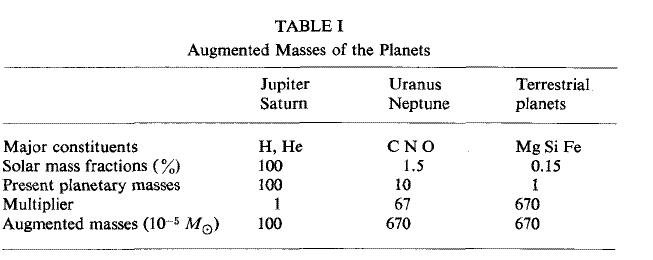Published online by Cambridge University Press: 30 March 2016
Prof. Fred L. Whipple kindly agreed to be the chairman for all three panels, and introduced the next speaker, Prof. F. Hoyle, who spoke on ‘The Solar Nebula’. Hoyle: I would like to begin this contribution by considering the deductions we can make by comparing the gross chemical compositions of the planets with the composition of the Sun. For this purpose I have divided the planets into the three groups shown in

The second line gives the mass fractions in the Sun of the major constituents of the planetary groups, while the fourth line gives the factors by which the present masses must be multiplied to give the amounts of solar material needed to yield the appropriate amounts of main planetary constituents. The interesting points emerge that Jupiter and Saturn require the least amount of solar material, and that Uranus and Neptune on the one hand and the terrestrial planets on the other require approximately equal amounts. The total requirement is for ≈10-2Mʘ This is less by a factor ≈10 than the amount postulated in many theories of the origin of the planetary system. However the amount we have now calculated can readily be seen to be consistent with angular momentum requirements.